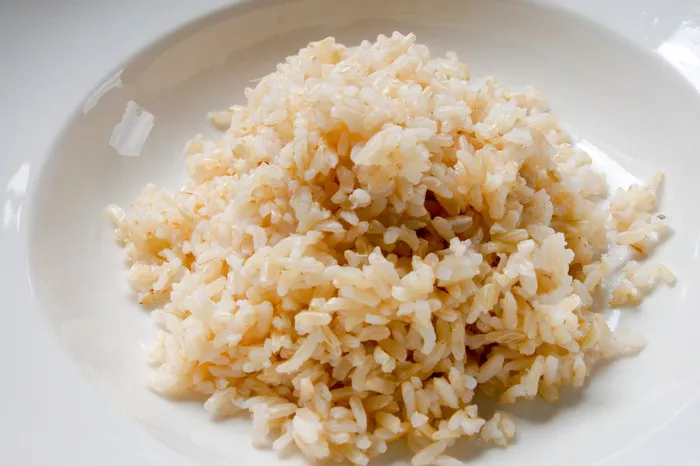Chinese cabbage, also known as Napa cabbage, is a versatile vegetable that can be cooked in various ways. Whether you want to stir-fry, steam, braise, or include it in soups and stews, Chinese cabbage is a great addition to many dishes. This article will guide you through different cooking methods, tips, and flavor combinations for preparing Chinese cabbage.
What is Chinese Cabbage?
Chinese cabbage is a leafy vegetable with a mild, slightly sweet flavor. It has long, tender white stems and light green leaves, and it’s commonly used in Asian cuisine, particularly in Chinese, Korean, and Japanese dishes. Chinese cabbage is often found in soups, stir-fries, and salads.
There are two main types of Chinese cabbage:
Napa Cabbage: This variety has long, crinkly leaves and is most commonly used in stir-fries and soups.
Baby Chinese Cabbage: These are smaller and milder than Napa cabbage and are often used in salads or pickled dishes.
Chinese cabbage is not only delicious but also healthy. It is rich in vitamins A and C, calcium, and fiber, making it a great addition to any meal.
How to Prepare Chinese Cabbage
Before you cook Chinese cabbage, it’s important to prepare it properly. Here’s how you can do it:
1. Wash the Cabbage
First, remove any outer leaves that are wilted or damaged. Then, cut the cabbage in half lengthwise to expose the inner leaves. Rinse it thoroughly under cold running water to remove any dirt or grit that may be between the leaves. If the cabbage is very large, you may want to cut it into quarters for easier handling.
2. Remove the Core
Chinese cabbage has a firm, fibrous core. To make cooking easier, you can cut out the core with a sharp knife. Simply slice the cabbage in half, then make a diagonal cut to remove the thick, white core from each half.
3. Chop or Slice
Once the cabbage is clean and de-cored, decide how you want to cut it. For stir-fries or salads, it’s best to chop the cabbage into bite-sized pieces or thin strips. For soups, you can cut it into larger chunks or leave it in whole pieces for a more rustic look.
Cooking Methods for Chinese Cabbage
Now that your cabbage is prepared, let’s explore different cooking methods that will bring out the best in this vegetable.
Stir-Frying Chinese Cabbage
Stir-frying is one of the most popular ways to cook Chinese cabbage. This method keeps the cabbage crisp and tender, preserving its natural sweetness.
Steps:
- Heat a wok or large skillet over medium-high heat and add 1-2 tablespoons of oil (vegetable oil, sesame oil, or peanut oil work well).
- Add chopped garlic, ginger, or chili for extra flavor (optional).
- Once the oil is hot, add your chopped Chinese cabbage and stir-fry for about 3-5 minutes, or until the cabbage is tender but still slightly crunchy.
- Season with soy sauce, oyster sauce, or a dash of salt and pepper.
- Add optional ingredients like sliced mushrooms, bell peppers, or carrots for a more colorful dish.
Tips:
- Avoid overcooking the cabbage; it should remain crisp.
- You can also add protein like chicken, pork, or tofu to make a complete stir-fry.
Braising Chinese Cabbage
Braising is a slow-cooking method where the cabbage is cooked in a small amount of liquid. This method is great for Chinese cabbage because it softens the leaves and brings out the natural sweetness.
Steps:
- Heat some oil in a large pan over medium heat and sauté garlic or ginger for a minute.
- Add the chopped cabbage and stir to coat it in the oil and aromatics.
- Pour in ½ to 1 cup of chicken broth, vegetable broth, or water. You can also use a mixture of soy sauce and water for added flavor.
- Cover the pan and simmer for 10-15 minutes until the cabbage is tender.
- Season with salt, pepper, and a splash of soy sauce or vinegar to taste.
Tips:
- For a richer flavor, you can add a bit of sugar or honey to the braising liquid.
- Braised Chinese cabbage pairs well with grilled meats or rice dishes.
Steaming Chinese Cabbage
Steaming Chinese cabbage is a great way to preserve its delicate flavor and nutritional value. This method is commonly used for dim sum or as a side dish in Chinese meals.
Steps:
- Prepare a steaming pot or use a bamboo steamer.
- If using a bamboo steamer, line the bottom with parchment paper or a cabbage leaf to prevent the cabbage from sticking.
- Arrange the cabbage leaves or chopped cabbage in the steamer, making sure there’s enough space for steam to circulate.
- Steam for 5-8 minutes, or until the cabbage becomes tender.
- Once cooked, drizzle with a little sesame oil, soy sauce, and sprinkle with sesame seeds for extra flavor.
Tips:
- You can steam the cabbage along with other vegetables or protein for a complete meal.
- To add some crunch, you can stir-fry the cabbage briefly after steaming.
Cooking Chinese Cabbage in Soup or Stews
Chinese cabbage is often added to soups or stews in both Chinese and Korean cuisines. The cabbage adds a mild flavor and absorbs the flavors of the broth.
Steps:
- Prepare your soup or stew base with vegetables, meat, or tofu.
- Add the chopped Chinese cabbage to the pot and let it simmer for 10-15 minutes.
- If you’re making a Korean kimchi stew (Kimchi Jjigae), Chinese cabbage is a key ingredient. Simply add it to the soup along with kimchi, pork, or tofu.
- Season the broth with soy sauce, miso paste, or any spices that complement the soup’s flavor.
Tips:
- Chinese cabbage can be added to broths and soups toward the end of the cooking process so it doesn’t overcook and lose its texture.
- If you’re making a vegetable-based soup, Chinese cabbage pairs well with mushrooms, carrots, and onions.
Pickling Chinese Cabbage
If you want to enjoy Chinese cabbage in a different way, you can pickle it. Pickled Chinese cabbage is often served as a side dish or used in Korean kimchi.
Steps:
- Cut the cabbage into bite-sized pieces or strips.
- Toss the cabbage with a generous amount of salt and let it sit for a couple of hours to draw out moisture.
- Rinse the cabbage and drain it well.
- Prepare a pickling solution using vinegar, sugar, salt, and your favorite spices (garlic, ginger, chili flakes).
- Pour the pickling liquid over the cabbage and let it marinate for at least a few hours or overnight in the refrigerator.
Tips:
- You can customize the pickling liquid with ingredients like fish sauce, lemon juice, or chili for a spicier version.
- Pickled Chinese cabbage makes a great addition to salads, sandwiches, or as a tangy side to balance richer dishes.
Flavor Combinations with Chinese Cabbage
Chinese cabbage is mild and can easily take on the flavors of the seasonings and ingredients you pair with it. Here are some great flavor combinations:
Garlic and Ginger: These two aromatics are often used together in stir-fries and braises for a fragrant and savory flavor.
Soy Sauce and Sesame Oil: These classic Asian seasonings add a salty, umami-rich flavor to your dishes.
Chili and Vinegar: For a spicy and tangy twist, combine chili and vinegar, especially when pickling or braising the cabbage.
Miso and Tofu: In soups, Chinese cabbage pairs well with miso paste and tofu for a comforting and vegetarian meal.
Tips for Cooking Chinese Cabbage
Don’t Overcook: Chinese cabbage cooks quickly. Overcooking can make it soggy and lose its flavor. Aim for tender, but still slightly crunchy cabbage.
Experiment with Other Vegetables: Chinese cabbage pairs well with other vegetables like bell peppers, mushrooms, carrots, and onions. Mix and match for variety.
Use as a Wrap: The large leaves of Chinese cabbage are also great for wrapping ingredients. Use them to make dumplings or wraps, or stuff them with rice and meat for a hearty meal.
Conclusion
Chinese cabbage is a versatile, easy-to-cook vegetable that can be prepared in many ways. Whether you stir-fry it, braise it, steam it, or add it to soups and stews, it brings a mild sweetness and crunch to any dish. With its delicate flavor and ability to absorb seasonings, Chinese cabbage is a staple in many Asian cuisines and a great addition to your meals. Experiment with different cooking methods and flavor combinations to enjoy this healthy, delicious vegetable in new ways.
Related topics:



























